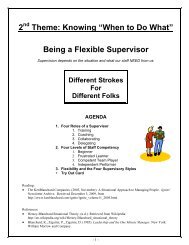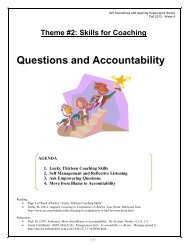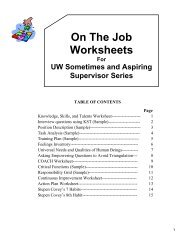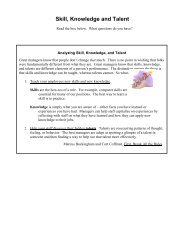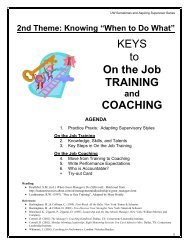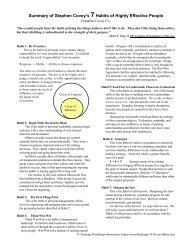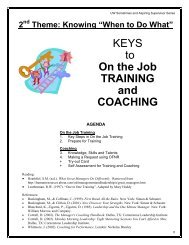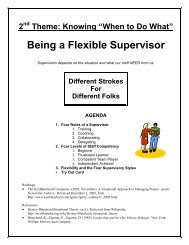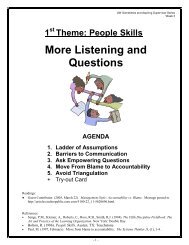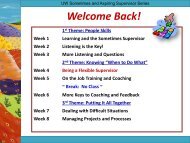Introduction to Integral Theory and Practice IOS Basic and the AQAL ...
Introduction to Integral Theory and Practice IOS Basic and the AQAL ...
Introduction to Integral Theory and Practice IOS Basic and the AQAL ...
Create successful ePaper yourself
Turn your PDF publications into a flip-book with our unique Google optimized e-Paper software.
Overview<br />
During <strong>the</strong> last 30 years, we have witnessed a his<strong>to</strong>rical first: all of <strong>the</strong> world’s<br />
cultures are now available <strong>to</strong> us. In <strong>the</strong> past, if you were born, say, a Chinese,<br />
you likely spent your entire life in one culture, often in one province, sometimes in<br />
one house, living <strong>and</strong> loving <strong>and</strong> dying on one small plot of l<strong>and</strong>. But <strong>to</strong>day, not<br />
only are people geographically mobile, we can study, <strong>and</strong> have studied, virtually<br />
every known culture on <strong>the</strong> planet. In <strong>the</strong> global village, all cultures are exposed<br />
<strong>to</strong> each o<strong>the</strong>r.<br />
Knowledge itself is now global. This means that, also for <strong>the</strong> first time, <strong>the</strong><br />
sum <strong>to</strong>tal of human knowledge is available <strong>to</strong> us—<strong>the</strong> knowledge, experience,<br />
wisdom <strong>and</strong> reflection of all major human civilizations—premodern, modern, <strong>and</strong><br />
postmodern—are open <strong>to</strong> study by anyone.<br />
What if we <strong>to</strong>ok literally everything that all <strong>the</strong> various cultures have <strong>to</strong> tell us<br />
about human potential—about spiritual growth, psychological growth, social<br />
growth—<strong>and</strong> put it all on <strong>the</strong> table? What if we attempted <strong>to</strong> find <strong>the</strong> critically<br />
essential keys <strong>to</strong> human growth, based on <strong>the</strong> sum <strong>to</strong>tal of human knowledge now<br />
open <strong>to</strong> us? What if we attempted, based on extensive cross-cultural study, <strong>to</strong><br />
use all of <strong>the</strong> world’s great traditions <strong>to</strong> create a composite map, a comprehensive<br />
map, an all-inclusive or integral map that included <strong>the</strong> best elements from all of<br />
<strong>the</strong>m?<br />
Sound complicated, complex, daunting? In a sense, it is. But in ano<strong>the</strong>r<br />
sense, <strong>the</strong> results turn out <strong>to</strong> be surprisingly simple <strong>and</strong> elegant. Over <strong>the</strong> last<br />
several decades, <strong>the</strong>re has indeed been an extensive search for a comprehensive<br />
map of human potentials. This map uses all <strong>the</strong> known systems <strong>and</strong> models of<br />
human growth—from <strong>the</strong> ancient shamans <strong>and</strong> sages <strong>to</strong> <strong>to</strong>day’s breakthroughs in<br />
cognitive science—<strong>and</strong> distills <strong>the</strong>ir major components in<strong>to</strong> 5 simple fac<strong>to</strong>rs,<br />
<strong>Introduction</strong> <strong>to</strong> <strong>Integral</strong> <strong>Theory</strong> <strong>and</strong> <strong>Practice</strong>. Page 2



